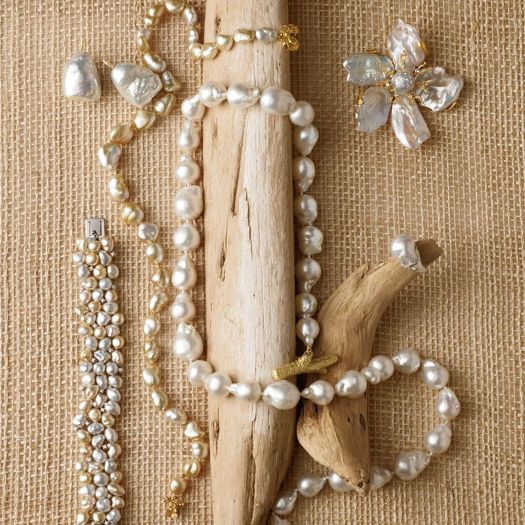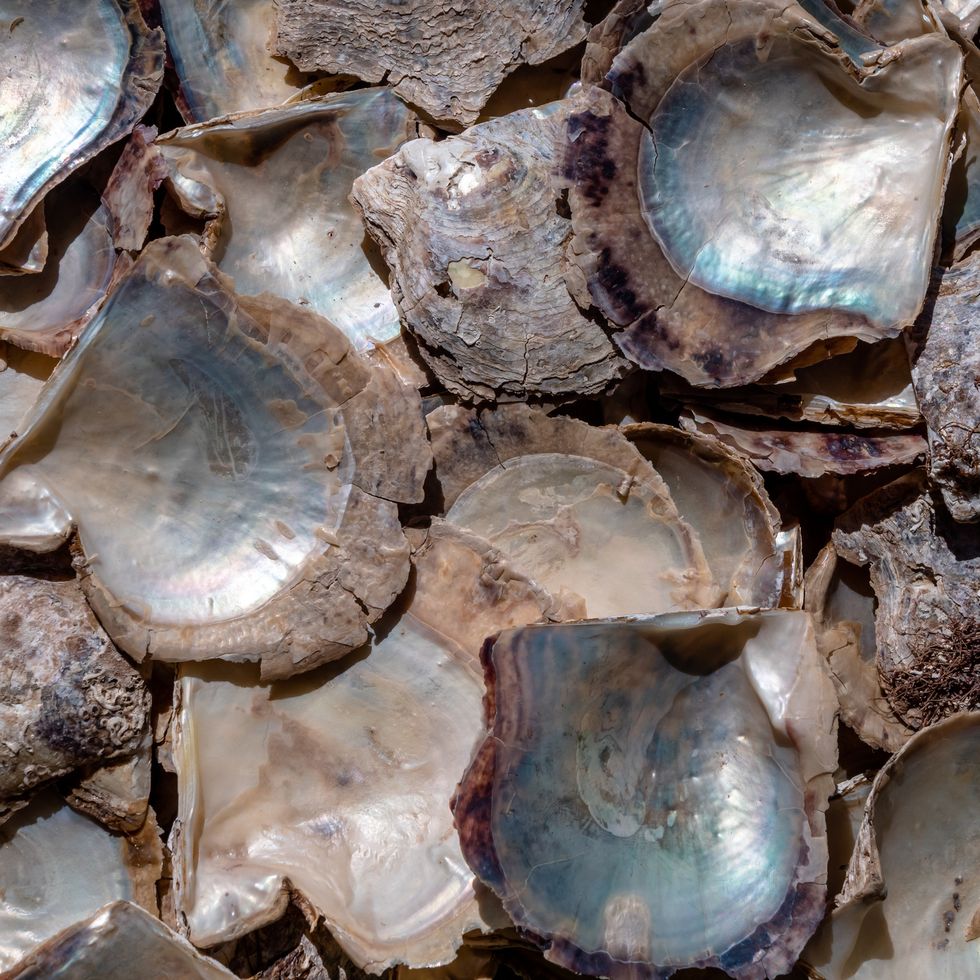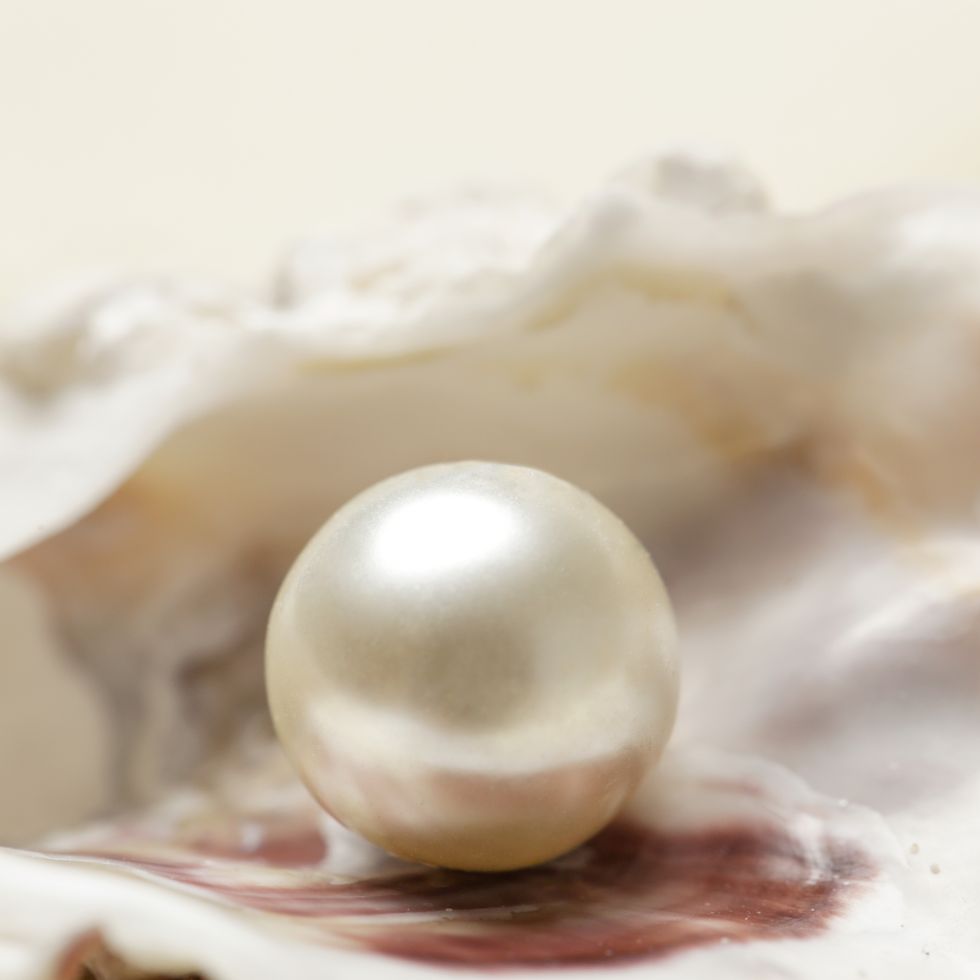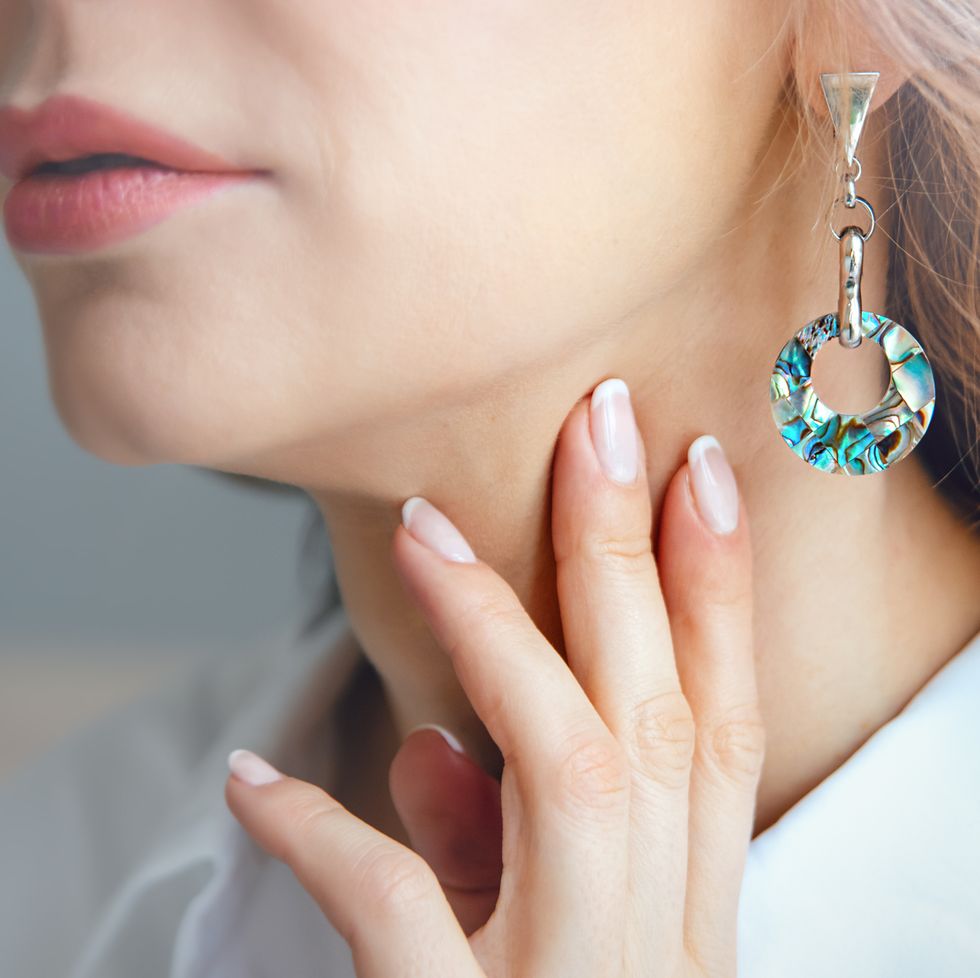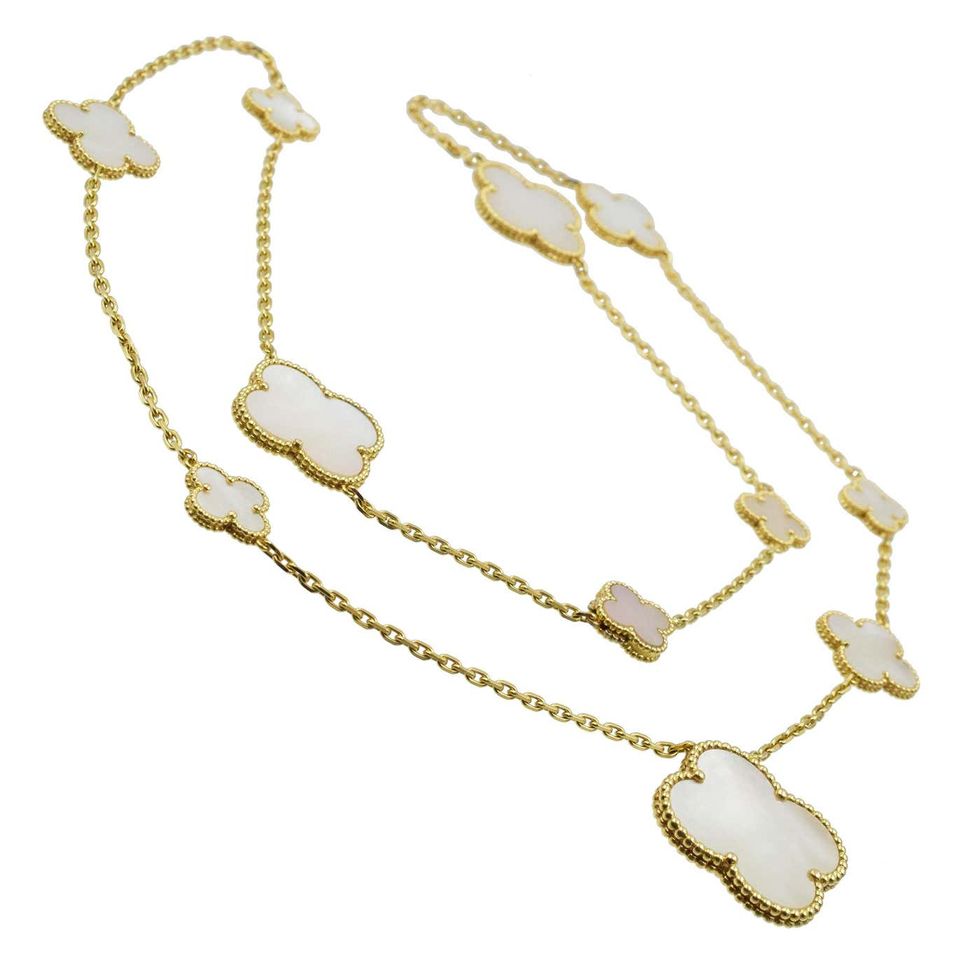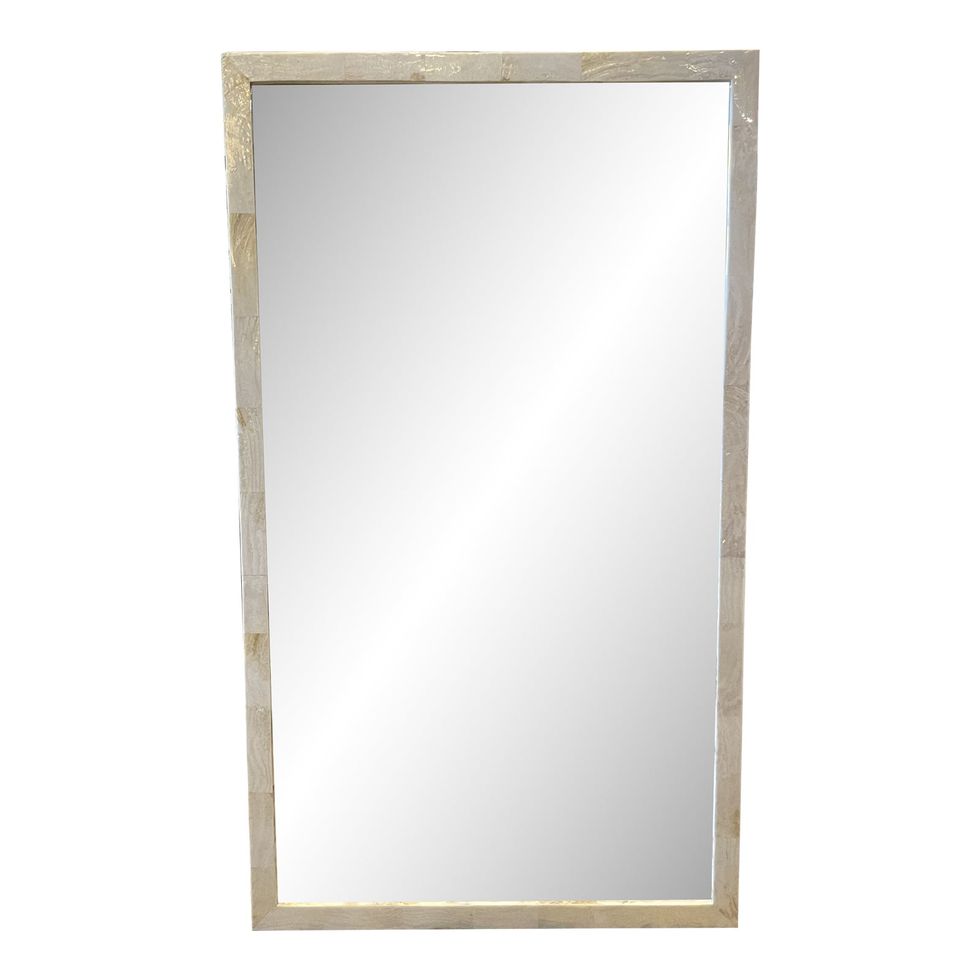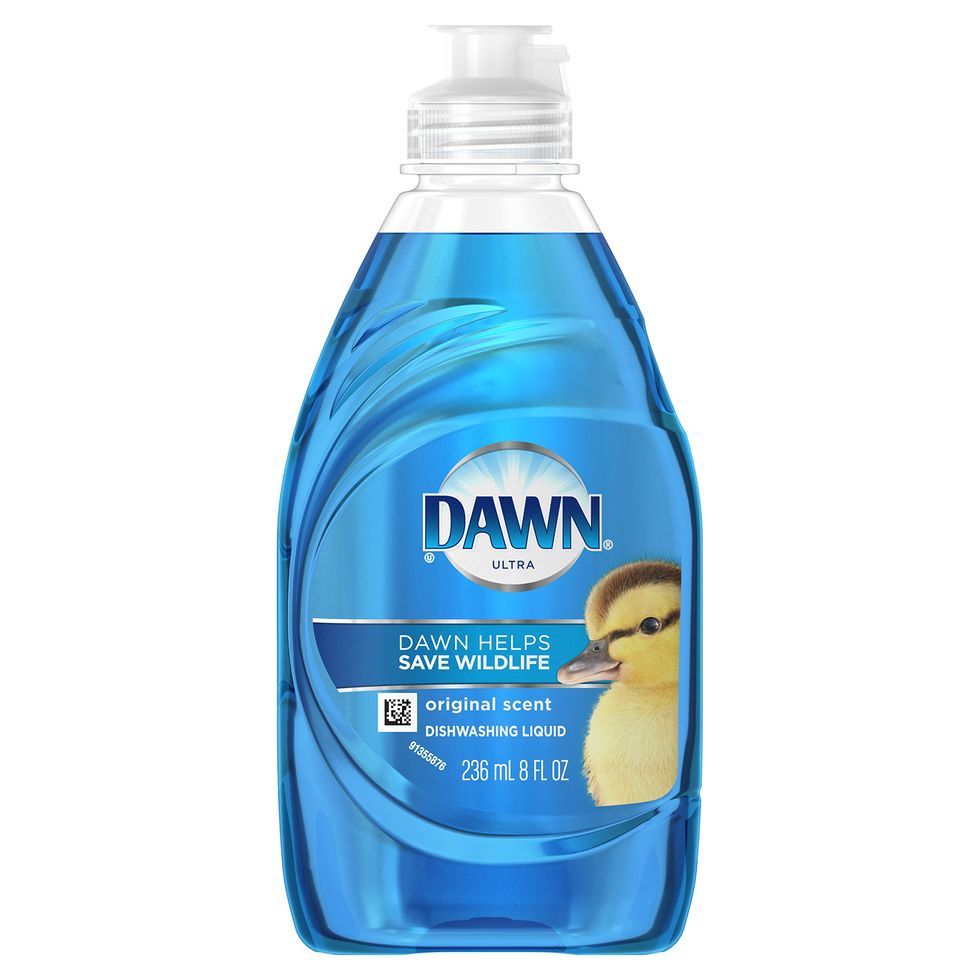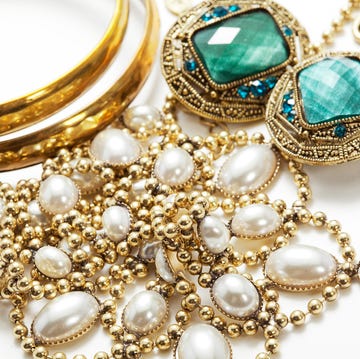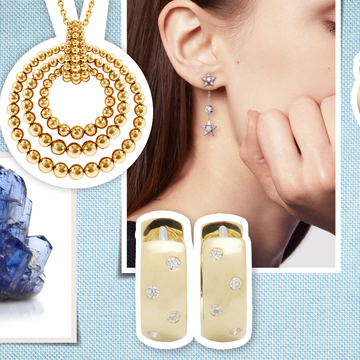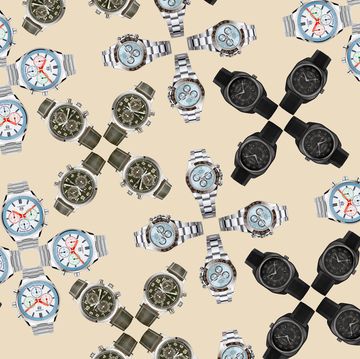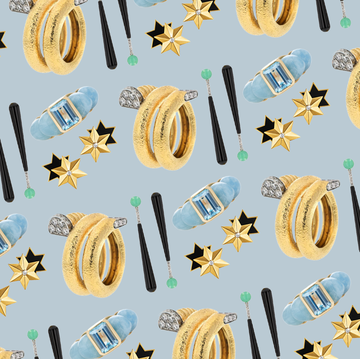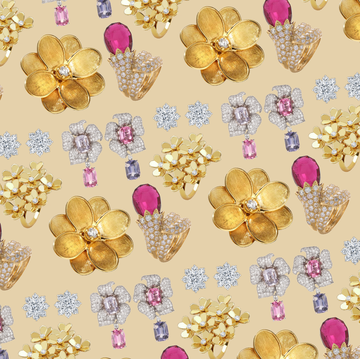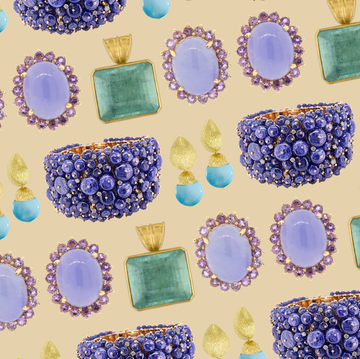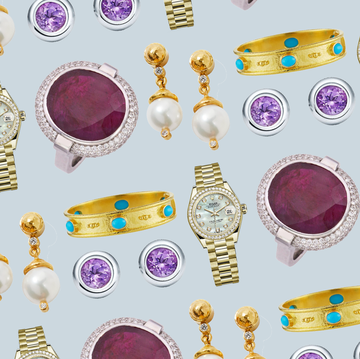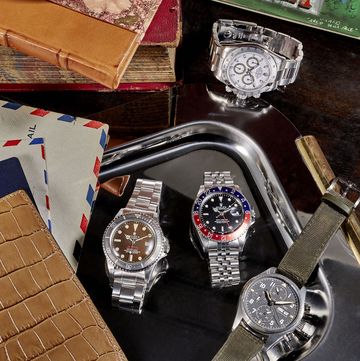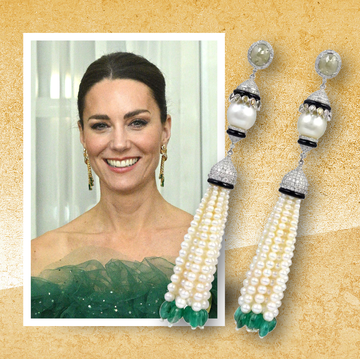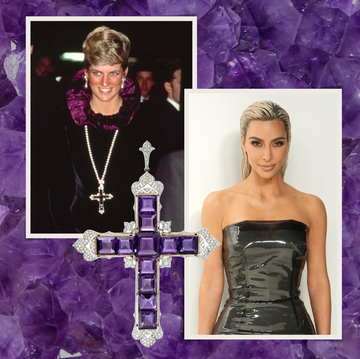If you’re looking for an iridescent option to add to your jewelry collection, it might be worth looking into mother of pearl. This stunning gemstone is having its moment, but most fine jewelry aficionados have known about the stone for years now, due to its prominent fixture in Van Cleef & Arpels's iconic Alhambra design. With its chic, weighted look and shiny exterior, it’s also commonly found on cuff links, as an accent on tableware, and in accessories such as vases or jewelry boxes.
“Mother of pearl is particularly known for its iridescence,” explains Nicole Corsini, marketing director of San Francisco-based company Lang Antique & Estate Jewelry. “It’s also more affordable than most other gemstones, which makes it a great option for those on a budget.” Below, here’s everything you need to know about adding mother of pearl to your home and jewelry collection.
What is mother of pearl?
Also known as nacre, mother of pearl is an organic gemstone—which means that it’s one that’s been derived from a living organism. “Mother of pearl is created by a secretion from certain types of mollusks (most commonly oysters), which is released to protect the lining of their shells from bacteria, parasites, and a host of other debris,” explains Charlotte Macaulay, designer and founder of jewelry brand BEN. “It’s a mixed compound of calcium carbonate crystals, silk proteins, and other organic materials that are layered over the inner lining of the shells, resulting in the waves that can be seen on freshly harvested mollusks.”
Essentially, mother of pearl comes from the inner lining of mollusks’ shells, usually taking on the shape of the shell themselves. The result is a beautiful, decorative structure that can be cut in large slabs, and its sheen makes it a desirable gemstone for pendants and other decorative elements.
What is the difference between mother of pearl and pearl?
“Although pearls and mother of pearl are created from the same iridescent substance, nacre, that a mollusk secretes, they are still different in terms of formation and texture,” says Macaulay. “Different from a spherical pearl, mother of pearl is a thin layer formed on the inner lining of the mollusk's shell. The lining protects the shellfish from irritants that can get inside the shell, and also keeps it comfortable. Alternatively, pearls are formed inside the mollusk when an irritant does enter: The creature then coats the irritant with layer upon layer of nacre, which over time builds up a spherical pearl.”
This is also a big reason why mother of pearl is less expensive than pearl: After all, every mollusk creates nacre, but pearls are not guaranteed to be found in every oyster. “As an irritant entering the shell is a more rare occurrence, the value of a pearl is higher than that of mother of pearl—those will always layer the inside of the shell.”
Pearls also take so much longer to form (several years for pearls versus only a few months for mother of pearl), and the larger ones can take even longer—making them much rarer than mother of pearl.
In terms of composition, pearl is made completely out of nacre, and many layers of it, too: This is so that the mollusk entirely encases the contaminant that penetrated its shell. On the other hand, mother of pearl—while it does contain nacre—also contains mineral deposits such as calcium carbonate and other proteins, which helps give it its iridescent glow.
What considerations should you take note of when buying mother of pearl?
Mother of pearl offers a more affordable way to buy organic gemstones—but just like with other jewels, you need to be sure you’re buying high-quality options that’ll last for years to come.
“The best way to ensure that mother of pearl is authentic and that the jewelry is well made is to purchase it from a reputable seller: antique and vintage retailers, boutiques, galleries, department stores, or high-end design shops,” says Corsini. “In terms of the way it looks and feels, mother of pearl should have an appealing, iridescent luster and smooth, silky surface.”
According to Macaulay, there are four major considerations to keep in mind when you’re trying to validate the authenticity of your mother of pearl. “One, it should be cold to the touch: Check it against your cheek to feel the cool surface,” she says. “Two, it should be heavy—satisfyingly so for its size. Three, its back should look different from its front, so if it’s even all over, it’s not genuine. Four, when you tap it against your teeth, it should make a clicking noise: Fake mother of pearl will make a muffled thud instead.”
In terms of sizes and colors, you honestly get so much variety with mother of pearl—especially because it’s available relatively freely on the market. While they typically are cream, white, or off-white, they can also be found in gray, silver, yellow, black, blue-green, purple, and red, especially in rarer varieties.
The color depends on the type of mollusk from which it was found, and you have your choice of all types of striations, thanks to the variations of the stacked and interlocking platelets. “Both the thickness of the platelets and the amount of space in between them play a part in the colorful and iridescent quality of nacre,” adds Corsini, “and the one that you adore the best is simply a matter of personal preference.”
How do you decorate with mother of pearl?
Due to mother of pearl’s affordability and versatility, it has so much to offer in terms of decoration, explains Macaulay. “Mother of pearl has been long used in jewelry, from delicate earrings to over-the-top statements, especially because it can be cut into large pieces,” she says. But that’s not all: Many home accessories—such as accent trays, boxes, mirrors, and cutlery—can have accents of mother of pearl, and some designers even use it to create small pieces of tile for a shimmer around mirrors.
“In furniture, you can create incredible mosaic patterns made of finely cut sheets of mother of pearl,” adds Macaulay. Think a sleek tile in a bathroom or backsplash in a kitchen, as a door knob or on a sink surface, or to accentuate some original lighting: The best part of mother of pearl is that it can be added pretty much anywhere you want to add some added shine.
How do you care for mother of pearl?
Like any gemstone, mother of pearl needs to be well-maintained in order to keep its luster. “To maintain the beauty of mother of pearl jewelry, carefully wipe the piece with a soft damp cloth after you wear it,” says Corsini. “It’s also safe to use warm water with a drop of dish soap, but make sure to dry it thoroughly after cleaning.”
Avoid strong cleansers that could damage the stone’s delicate surface—and going off of that, mother of pearl jewelry shouldn’t be worn while swimming, exercising, gardening, or doing house work because the chlorine, harsh cleaners, and sweat could damage the gem.
Moisture can also seep into the tiny crevices of the surface, causing it to swell and crack over time, and leading to discoloration and loss of luster. “Although it’s strong, mother of pearl will scratch, so it should be kept in a separate pouch when you’re not wearing it,” she adds. “It should never be scrubbed, as you could easily damage the porous outer layers.”

